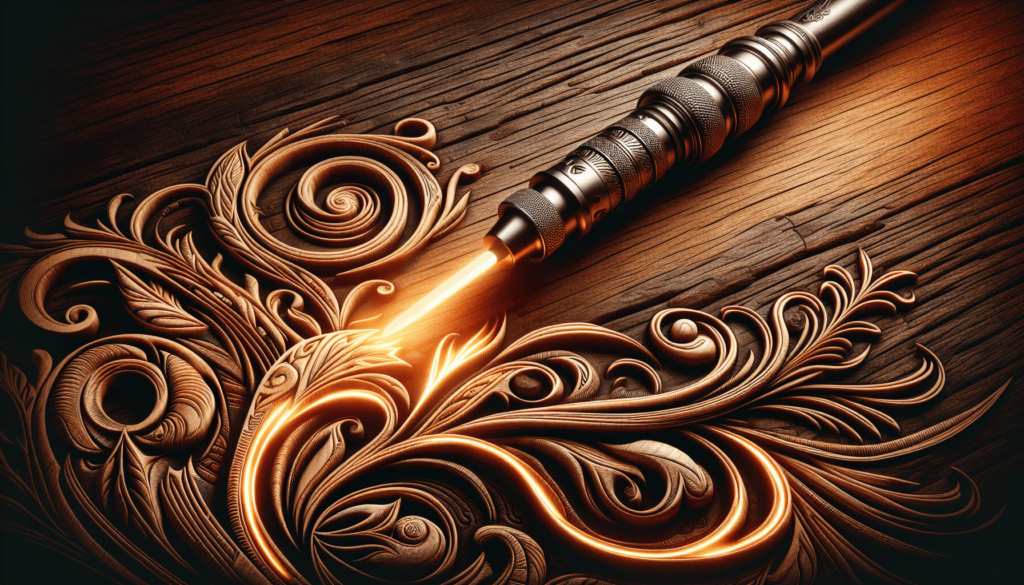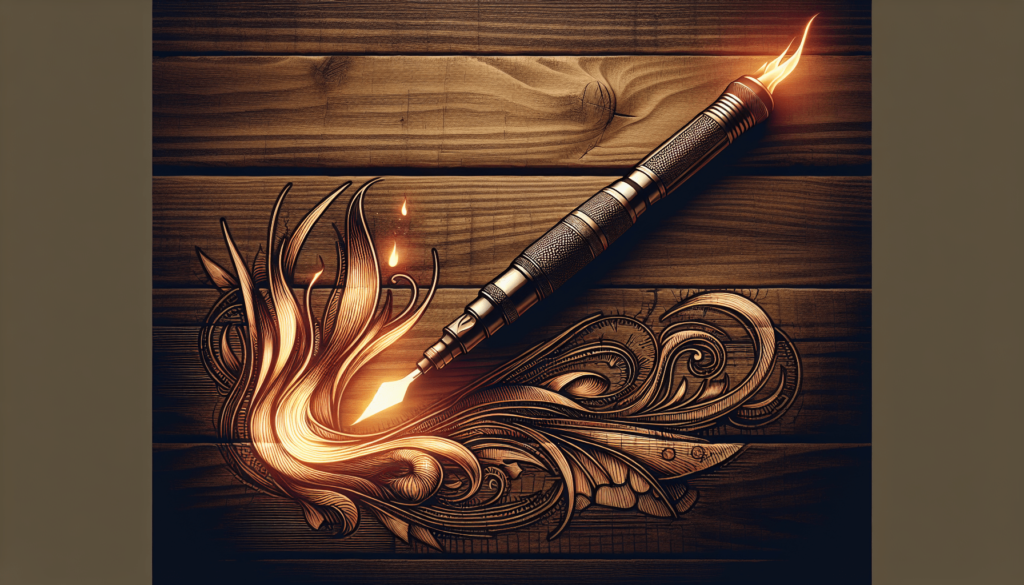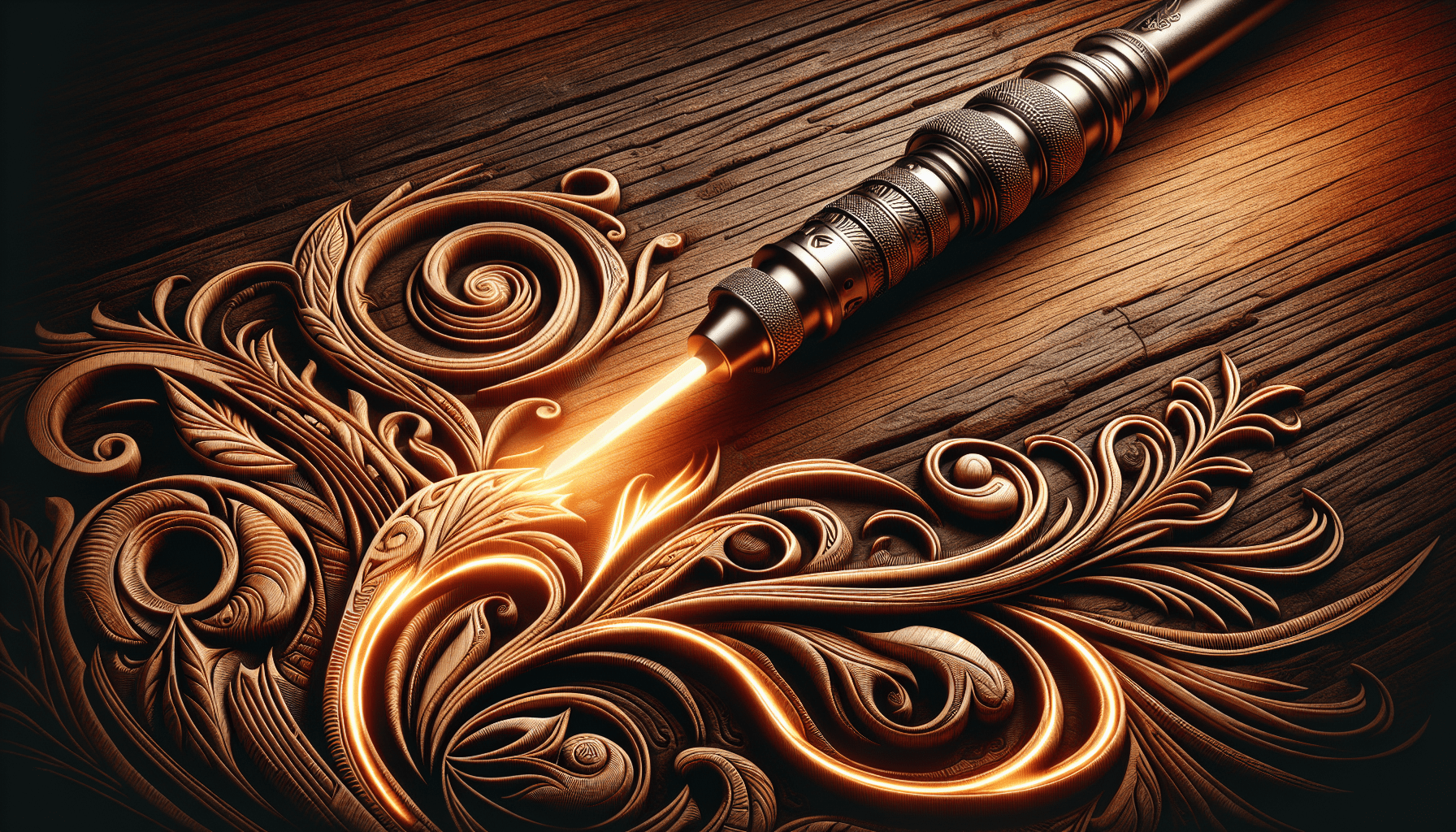Wood burning, also known as pyrography, is a fascinating art form that allows artists to create intricate designs on wood using controlled heat. I first came across this craft when I saw an artist etching an elaborate landscape onto a wooden plaque. The smell of burning wood and the mesmerizing patterns caught my attention, drawing me into the world of pyrography. It’s an ancient technique, but it continues to captivate people today with its blend of creativity and skill. Whether you’re a seasoned artist or someone just curious about different crafts, pyrography offers a unique way to explore artistic expression using nature’s own canvas. What do you call it when you burn wood? It’s a question that might seem trivial at first glance, but once you start digging, it opens up an entire world of terminology, techniques, and even a bit of artistry. Now, if you think back to your school days, you’d probably recall that burning anything involves combustion, but let me assure you, we’re talking about something far more specific and intriguing.
Pyrography: The Art of Wood Burning
So, the answer to our burning question (pun intended) is “pyrography.” Doesn’t that word make you think of something out of a medieval alchemy book? Yes, pyrography is the official term, and it comes from the Greek words “pyro” meaning fire and “graphos” meaning writing. Essentially, it is the art and technique of using heat to create designs on wood.
Why Pyrography?
You may wonder, why bother with this at all? Why not just paint your designs or buy some pre-made decorations? Well, for one, there’s a tactile pleasure that comes from working with natural materials like wood. Then, there’s the added allure of transforming a simple piece of wood into a piece of art with just a bit of heat. It’s like a magic trick, but with a soldering iron instead of a wand.
Tools of the Trade
Before you get all excited and start heating up your kitchen utensils, let me break down the tools you’ll need. You don’t actually need a bonfire to practice this art!
| Tool | Description |
|---|---|
| Pyrography Pen | The primary tool, functioning like a soldering iron but with variable tips. |
| Variable-Temperature Control | Allows you to control the heat, essential for different wood types. |
| Different Tips | For varying lines and patterns, similar to calligraphy nibs. |
| Sandpaper | For smoothing out the wooden surface before you start. |
| Carbon Paper | To transfer your designs onto the wood. |
Choosing the Right Wood
Not all wood is created equal, especially when it comes to pyrography. Here, we’re diving into the nuances of wood types.
Basswood
Basswood is like the beginner’s canvas in wood burning. It’s soft, has minimal grain, and is generally easy to work with. If you’re starting out, this is your go-to material.
Birch Plywood
Birch plywood is sturdy with a fine grain, making it another excellent choice. The only downside is that it can sometimes have adhesive chemicals from the plywood layers, which might interfere with the burning process.
Maple and Cherry
For those looking to create more intricate designs, hardwoods like maple and cherry can be fantastic, adding a touch of sophistication to your work.
The Technique
Now, I know you’re itching to get started, so let’s break down the technique, shall we?
Step 1: Preparing the Wood
First things first, you need to prep your wood. Sand it down to get rid of any imperfections, making sure it’s smooth as a baby’s bottom. Trust me, you don’t want splinters ruining your masterpiece.
Step 2: Transferring Your Design
Here’s where carbon paper comes into play. Place your design on the wood, add the carbon paper underneath, and trace over it. Your design will magically appear on the wood, ready for you to burn.
Step 3: Burning the Design
This is the part where you grab your pyrography pen and start outlining your design. Make sure you start with a low temperature. You can always make it darker and deeper, but you can’t undo a burn mark.
Step 4: Adding Details
After the initial outline, go back in to add fine details. This is where those various tips for your pyrography pen come in handy. Think of it like switching between different brush sizes in painting.
Step 5: Finishing Touches
Once you’re satisfied with your work, you may want to add a layer of varnish to protect it. Or maybe you want to leave it as it is, all raw and natural. Either way, you’ve just created something uniquely yours.
The History of Pyrography
You might think this is some new-age activity, but it’s actually ancient. People have been practicing pyrography for centuries. Imagine a caveman with a hot stick, crafting designs onto wood. Okay, that’s an oversimplification, but the roots do go back to ancient civilizations. Egyptians, Romans, and even the Chinese have their own versions of pyrography.
From Ancient Times to Today
In ancient China, artisans would use heated metal rods to incise intricate patterns on wood and even bamboo. Meanwhile, in Europe, the technique gained popularity during the Victorian era. Many intricate furniture pieces from that time boast exquisite pyrography.
Modern-Day Pyrography
Today, technology has made the art more accessible. Thanks to modern pyrography pens, you don’t have to worry about heating and reheating a metal rod. Now, it’s as simple as plugging in a pen and adjusting the temperature.
Famous Pyrographers
You might not be familiar with names like James Conway Farley or Burne-Jones, but these artists have made significant contributions to the field. They’ve elevated pyrography from a simple craft to a recognized form of fine art.
| Name | Contribution |
|---|---|
| James Conway Farley | Known for pioneering pyrography in the United States. |
| Burne-Jones | Utilized pyrography as a complementary technique in his artworks. |
| Arthur Wardle | Famous for combining pyrography with watercolor techniques. |
Pyrography Across Cultures
In some cultures, pyrography is more than just art; it’s a form of storytelling or ritual practice. In Africa, for example, many tribes use wood burning to create ceremonial masks and other artifacts.
The Science Behind Pyrography
Now, I won’t bore you with heavy chemistry, but a bit of science makes the experience richer, don’t you think? The essence of pyrography lies in the pyrolysis process. Essentially, it’s the decomposition of the wood’s chemical structure under heat. When you apply heat to the wood, it breaks down cellulose and lignin, resulting in carbonization – those dark, beautiful burn marks.
How Heat Affects Different Woods
The type of wood and its moisture content can significantly affect your results. Softer woods like basswood will burn more easily, while hardwoods like oak might require more heat. Moisture can act as a barrier, preventing your designs from reaching the desired depth and color.

Getting Creative with Pyrography
Once you’ve got a handle on the basics, the sky’s the limit. People have used pyrography for everything from decorating kitchen cutting boards to creating elaborate portraits.
Mixed Media
One popular trend is to combine pyrography with other art forms like painting or staining. It adds an extra layer of depth and texture to the artwork.
Functional Art
Pyrography isn’t just for wall art. You can jazz up just about anything – from wooden spoons to coasters, to jewelry boxes. Imagine receiving a custom, hand-burned gift; it’s heartfelt and timeless.
Upcycling
Have an old wooden chair or shelf that’s seen better days? Pyrography offers a fantastic way to give it new life. Plus, it’s eco-friendly. You’re saving something from the landfill and turning it into art.
Challenges in Pyrography
Of course, every rose has its thorn, right? Pyrography isn’t without its challenges. Although therapeutic, it requires a steady hand and lots of patience.
Common Mistakes
One of the biggest beginner mistakes is uneven lines, usually caused by inconsistent pressure or fluctuating heat. Another common issue is wood splintering, which can ruin your design.
Safety Concerns
Since you’re working with high heat, safety is paramount. Always work in a well-ventilated area to avoid inhaling any potentially harmful fumes. Some woods release toxic chemicals when burned, such as pine, so make sure to do your homework beforehand.
Investment in Tools
Quality tools can be quite an investment. Cheaper pyrography pens might not offer temperature control, which is essential for intricate designs. If you’re serious about this craft, it’s worth spending a bit more for reliable equipment.

Pyrography in Modern Trends
In the age of mass production, there’s something incredibly appealing about handmade items. As a result, pyrography has seen a resurgence in recent years.
Social Media Influence
Platforms like Instagram and Pinterest have contributed to pyrography’s rising popularity. Artisans can showcase their work, share techniques, and inspire others in the process.
DIY and Craft Movements
The general boom in the DIY culture has also played a role. People are more interested than ever in making things from scratch and learning new skills, and pyrography fits perfectly into this trend.
Starting Your Pyrography Journey
Alright, if you’ve made it this far, you’re probably itching to get started. Here’s a checklist to get you going.
-
Choose Your Wood: Pick a wood type best suited for beginners, like basswood or birch plywood.
-
Get the Right Tools: Invest in a good quality pyrography pen with temperature control and a set of interchangeable tips.
-
Design: Start with a simple design. As you gain confidence, you can move on to more complex patterns.
-
Workspace: Make sure you have a comfortable, well-ventilated workspace. Safety first!
-
Practice: Like any skill, practice makes perfect. Spend some time getting to know how different woods react to different levels of heat.
Helpful Resources
There are plenty of resources available to help you on your journey. Books, online tutorials, and workshops can provide you with all the guidance you need.
| Resource Type | Example |
|---|---|
| Books | “Pyrography Basics” by Lora Irish |
| Online Tutorials | YouTube Channels |
| Workshops | Local Craft Stores |
| Online Communities | Reddit’s Pyrography Group |
Final Thoughts
Pyrography is a fascinating blend of art and science, merging the ancient with the modern. Whether you’re looking for a new hobby or a way to personalize your home decor, it offers a unique and rewarding experience.
So go ahead, grab that pyrography pen and a piece of wood, and let your creativity burn bright. Just remember – always practice in a safe, well-ventilated area, and don’t be discouraged by initial setbacks. Mastery takes time, but with patience and practice, you’ll be creating stunning wood-burned art before you know it.
Who knew that something as simple as wood burning could offer such a rich and rewarding journey?

